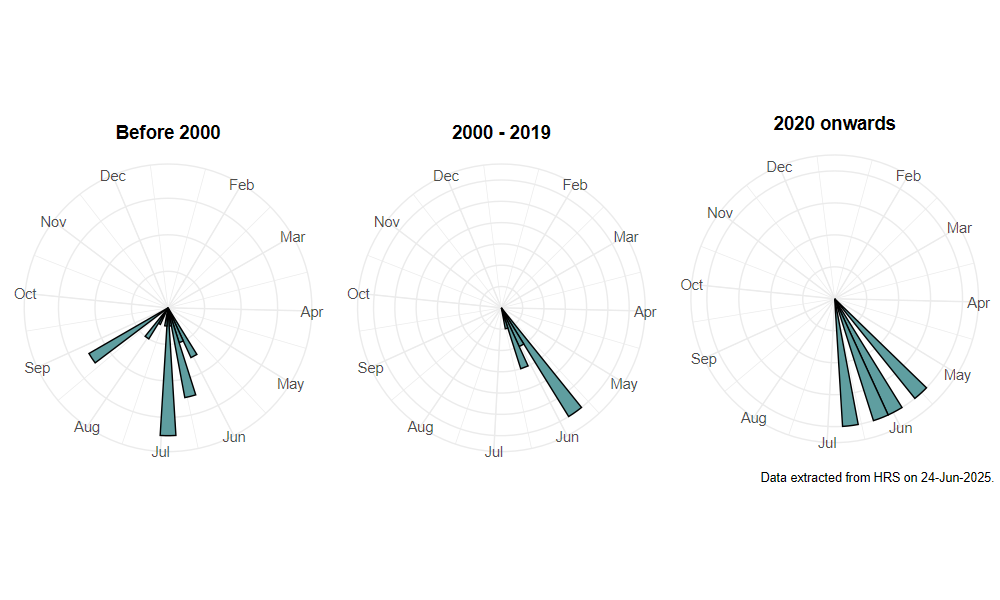Sphaerophoria loewi Zetterstedt, 1843
Identification
Identification difficulty = 4. ![]()
![]() according to Ball & Morris, 20241
according to Ball & Morris, 20241
Biology
Larva unknown. Adults have been found in brackish reed-beds (usually Common Reed Phragmites australis, but also Sea Club Rush Scirpus maritimus at Leighton Moss) at a few coastal localities. It is likely that the larvae feed on aphids or other soft-bodied Homoptera in this habitat. It has been suggested that the adult is active very early in the morning, but there are several recent records made in the middle of the day. Adults fly amongst stands of tall vegetation, usually remaining over the water, but they occasionally visit flowers.
Flight period
The following plots show the number of unique records per week excluding those reported to be of immature stages.

Status
Lower Risk (Near Threatened) - Ball & Morris, 20142. Vulnerable (RDB2) - Falk, 19913 and Shirt, 19874.
Distribution
A very rare species known only from a few widely separated coastal localities. The common feature in these localities seems to be the presence of brackish marsh. There is a recent report from Bedfordshire (O'Sullivan & Plummer, 2011)5 of a confirmed population breeding in a former clay pit with marginal vegetation composed of Common Reed and Sea Club Rush (which is indicative of saline influences).

-
Ball, S., & Morris, R. (2024). Hoverflies of Britain and Ireland. WILDGuides (3rd ed.). Oxford: Princeton University Press. ↩
-
Ball, S., & Morris, R. (2014). A review of the scarce and threatened flies of Great Britain. Part 6: Syrphidae. ( No. 9). Species status (pp. 1–130). Peterborough: JNCC. ↩
-
Falk, S. (1991). A review of the scarce and threatened flies of Great Britain. ( No. 39). Research and Survey in Nature Conservation (pp. 1–194). Peterborough: NCC. ↩
-
Shirt, D. (Ed.). (1987). Red Data Books: 2. Insects. Peterborough: NCC. ↩
-
O’Sullivan, J., & Plummer, S. (2011). Sphaerophoria loewii breeding in Bedfordshire. Hoverfly Newsletter, 50, 8–9. ↩